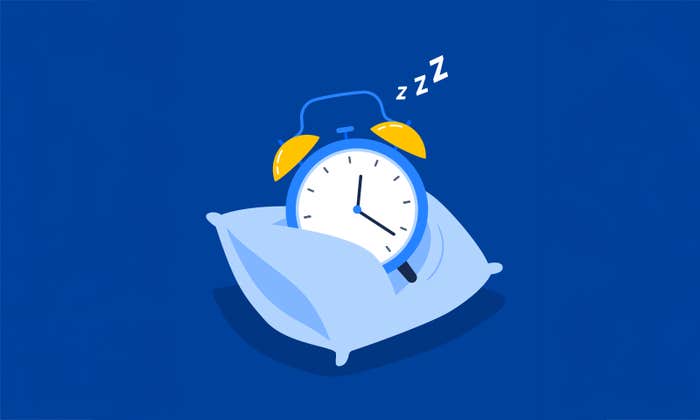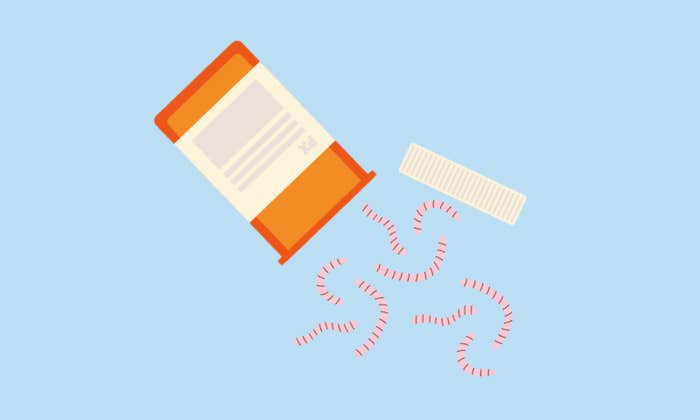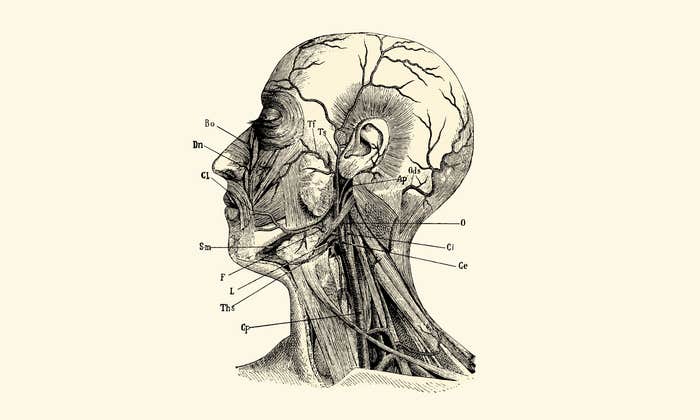When I ask Jack Gilbert about the future of medicine, he tells me what he recommends to his graduate students before they head into surgery, “When you go to cut someone open, you don’t just have one patient on the gurney. You have 40 trillion patients, and you have to think of how your actions are going to affect them.”
Those trillions of patients are microorganisms, communities of bacteria, viruses, fungi, and in some unhappy cases—pathogens. But they’re not all free riders. A growing body of research is making the case that the microscopic creatures in our gut, ears, mouth, and on our skin—together called our microbiome—play an essential role in our wellbeing. And Gilbert, faculty director of the Microbiome Center at the University of Chicago, and his team are at the cutting edge of this research.
Gilbert chatted with Nautilus from Chicago about the microbiome revolution, what a future trip to your doctor might look like, how our microbiome can make us fat (or thin), and the advice he presents to parents in his new book Dirt is Good.
You’ve said there is a revolution happening in medicine. What is it?
For the last hundred years, doctors have tried to remove all sources of dangerous pathogens: Making sure that our apron is clean, our hands are clean, the air is clean. Then we pump [the patient] full of antibiotics with the understanding that we’ve then killed off all the bacteria, and therefore there is no chance that the patient can get infected. And when the patient does get infected, one of those two things must have failed. And we blame ourselves.
We will have the ability to tweak elements of their life and microbiome in order to treat them before there’s a problem.
Well, this [approach] stresses the bacteria in the body, and allows the body to almost select for organisms that are more prone to attacking it. So, instead of curing the patient and removing the dangerous sources, we’re actually creating an environment inside the patient that selects for organisms that are dangerous.
So, the paradigm shift is looking at medicine not only from the perspective of the patient, but from the perspective of the microbial environment inside the patient. In many instances, the next 10 years are probably going to be the golden age of discovery for the applications of clinical science in our field.
What will a visit to the doctor be like in 10 years?
Imagine you have a routine mammogram and there’s a lump. They will refer you to an oncologist who will sequence the genome of your cancer and your microbiome. You’ll plug this information into our machine learning algorithms, and determine the most appropriate personalized strategy for you to respond to therapy. Maybe the doctor will find that you’re missing certain microbes, which would make a given therapy most effective. So we also give you a biological probiotic to enhance the activity of your therapeutic.
Also, we’ll continue to use the microbiome and develop therapeutic advances, which help to monitor our health in a continuous manner. I have interest in developing sensors that will be attached to toilets that allow us to continually monitor peoples microbiotin in their stool and use it as an early warning system for potential diseases. Or oral swabs or smart toothbrushes, which sense the microbial community in your mouth while you’re brushing your teeth.
We’ll enter into a phase when we know months in advance if someone is developing a complication. And then we will have the ability to tweak elements of their life and microbiome in order to treat them before it ever becomes a problem.
Which illnesses are correlated with our microbiome?
Everything from pet allergies to C. difficile colitis to anorexia. There’s polycystic ovary syndrome, sickle cell disease, renal disease, chronic pulmonary fibrosis. All of these are associated in some way with a dysregulation in the microbiota. Genetics still plays a role—it sets the stage upon which the microbial and immune system actors play. But there is always an associated link.
How is asthma linked to the microbiome?
We did work published last year in the New England Journal of Medicine, which demonstrated that the exposure children get on the farm is highly impactful to their health. We looked at the Amish and the Hutterites, two religious groups in the United States who came originally from agrarian societies in Eastern Europe. But today the Amish live on personal family farms where the kids are getting involved in the farming environment from birth, whereas the Hutterites live on communal farming environments where they actually embrace technology in quite a substantial way. For health and safety regulations, this means that the children aren’t allowed on the farm. So, the children on the Amish farm are exposed to all the animals, and the dirt. The children on the Hutterite farm are not.
Kids should spend more time outside or digging in the dirt.
They both have exactly the same genetic markers and genetic predisposition toward asthma. The Amish kids only have around 5 percent asthma in their population. Whereas the Hutterites have around 20 percent asthma, which is a sevenfold increase in the asthma risk in that population. It is significantly above the average for the U.S. We think the reason for this is because genetically they are predisposed to asthma. But when you have the right exposure early in life the asthma prevalence goes away.
Your work links our microbiome to our mental health. That’s surprising.
We know that microbes and dysbiosis in the gut can lead to depression and anxiety. So for example, a standard mouse will run around outside quite happily in the environment and hide as much as possible, because any mouse that was outside that wasn’t hiding would get eaten quite quickly. What’s interesting is if we take that mouse and we take all the bacteria away from it, then that mouse will lose that phenotype and it will actually hang around outside much more frequently. But if we add the bacteria back into the mouse, literally with probiotic formulations into its gut, it’ll start to hide back in the boxes like a normal mouse would. So the phenotype that protects this mouse in the natural environment is actually a result of this microbic exposure.
And we’ve started to demonstrate this in humans by taking formulations of bacteria that produce gamma-Aminobutyric acid [GABA], a neurotransmitter, which produces a sense of calm. And we see that people who are depressed have fewer of these organisms in their gut than people who are neurotypical. GABA binds onto receptors in your gut that can help to regulate gastrointestinal activity. But it also sends signals through the immune system and the central nervous system up the vagal nerve, which goes up through your spine and into your brain, and that changes neurochemistry. So if we change the neurochemistry of your gut, we change the neurochemistry of your brain.
Is it true that our microbiome can make us fat?
What’s interesting is that your propensity toward developing fat from eating a lot of calories and high fat is associated with the types of bacteria that live inside your gut. So if we took the bacteria from an obese person and we put it into a mouse, the mouse would put on more calories than a mouse that got bacteria from a thin person for the same calorific intake, and for the same exercise regimen.
The fat animal will essentially have a microbiome inside it which is pro-obesity. And we’re starting to understand why that is. It looks like the bacteria disrupt how your organs work. They disrupt your metabolic clocks inside your body and that affects things. But they also alter the inflammation inside your body, so your body is more inflamed all the time, which can disrupt how your body processes energy. When it’s more inflamed, it tries to store more of the energy than burn it.
You can of course change that by eating a more balanced, wholesome diet. So more fruits and vegetables, and fermented foods, and just try and control your calorific intake and eventually after about six to nine months, your microbiome will stabilize around this new environment, which you’ve created in your gut. It will be less pro-inflammatory, and less likely to disrupt your metabolism.
What does a healthy microbiome look like?
I think about a forest. It’s an ecosystem that functions and is in equilibrium with its environment. The trees, the animals, and the birds—there’s not one thing taking over. In a microbiome that’s healthy, you have a diverse community of organisms that are all interacting and functioning with the body to produce a healthy human being.
So health is an emergent property of that equilibrium, but if you have a disruptive forest, and everything else dies off and one thing takes over that’s just similar to a disruptive microbiome. You know you can have one pathogenic organism, one dangerous bacteria, or one dangerous virus that takes over and everything else starts to die out. Or a disruptive microbiome may just be the only organisms left in the gut are ones that are incredibly pro-inflammatory.
Do we have the same microbiome over the course of a lifetime?
By around 18 months you develop a microbiome, which will stick with you for most of your life. You can disrupt it or you can change it slightly. For example when you hang out with someone for a long period of time, you acquire some of their microorganisms. Couples generally have more microbial similarity; they share more bacteria than non-couples.
We also know that if you take a lot of antibiotics and you move to a new environment or you change your diet dramatically, you can change the structure of your microbiotin. Not necessarily the composition, but the structure of it. We also know that the ecosystem inside you performs certain functions, and some of these species that are abundant now may end up playing a less important role. And so, when you switch from eating Chinese food to Indian food, the rare species now becomes abundant. The abundant species now becomes rare—they’ve switched but they’re preforming the same roles. So there’s resilience within your microbiome, which allows you to adjust.
Is there a mismatch between our microbiome and modern life?
Your immune system evolved to experience certain types of bacterial exposure. That’s all encoded in your genome. So you’re born with a certain type of immunological response to your environment. But that immune system can be altered and manipulated by what type of microbe exposure you have. Our bodies are used to seeing more bacteria, more viruses, more fungi than they’re seeing now. And so they’re not used to coping with such a low level of microbial exposure.
We used to play outside where we got lots of microbial exposure. Now we generally live inside—90 percent of our lives are lived inside—where we get very little microbial exposure, and we try and kill off as many microbes as we can with cleaning products and antibiotics, which both kill the good and the bad bacteria. This leads to a reduction in our microbial exposure, and that reduction in microbial exposure, we think, is having an impact on autoimmune disorders and immune dysregulation.
We think of ourselves as being human, but really, we’re like a planet. We have 40 trillion inhabitants.
Also, we eat crappy food. We have a lot of pollution. Most people don’t have any pets, and have very little exposure to animals, which is very unusual for us as a society and for our ancestors. So a lot of the things, which our immune systems and our bodies evolved to cope with, are gone.
We think that by potentially adding good bacteria back into the body, for example with probiotic formulations, we may be able to have an impact upon the increasing regulatory response of the immune system.
Your new book, Dirt is Good, is a sort of how-to-manual for parents to help their young children develop a robust microbiome. What piece of advice could you give to parents?
By increasing the degree of microbial burden in your child’s life—not exposing him to more pathogens, just exposing him to more bacteria—you end up with a situation where the child’s immune system will develop the way its ancestors immune systems developed and will be much less likely to develop these chronic, non-fatal conditions, which can cause children and adults to suffer throughout life.
Kids should spend more time outside or digging in the dirt even being involved in gardening activities and living with animals. So yes, to an extent, dirt is good. But what is dirt is a massively complex question. If you got soil, which has a lot of heavy metal pollution, or you live in an industrial state or you’re surrounded by chemical pollutants, then use your logic. But for the most part, more microbial exposure is generally a good thing as long as it’s not dangerous.
How did you go from researching ecology to medicine? It seems like an unlikely path.
Actually I started out my career as a butterfly specialist working in Africa. Eventually, I got interested in microbial functions and ecology in oceans which I somehow transmuted into working in medicine. It’s a bit weird, and everyone told me that was a bad idea, but it’s got me this far, so I’m pretty okay with it.
Now, as a professor of surgery, I treat the human body as another ecosystem. We think of ourselves as being human, but really, we’re like a planet. We have 40 trillion inhabitants, and they’re quite diverse. There are over a thousand different species living in us, and they are adapted to our environment. We have parts of our body which are full of oxygen, and parts where there’s no oxygen at all. Parts which are very light, parts which are very dark, parts which are moist, parts which are dry. One of our goals as human microbial ecologists is to understand how our body’s inhabitants made that adaptation, and what impact that has on health and disease.
What do you do when you’re not being a scientist?
I like to play with my kids. We like to go camping. I also play lead guitar and lead vocals in a surgeons’ band. So the lead guitarist is my chief of surgery, and the bassist, his wife, is an anesthesiologist, the pianist is a gastro intestinal surgeon, the drummer is a heart surgeon and we also have nurses and medical students as back up singers or who play other instruments, so it’s fun. We’re good at entertaining at weddings or parties.
Jack Gilbert’s new book, Dirt Is Good, was published in June 2017.


























